
AI-powered delivery date estimates to boost conversion
Give shoppers peace of mind and protect and grow your bottom line
Personalized tracking experiences to build brand loyalty
Returns and exchanges management to mitigate fraud and reward best customers
Proactive communication to drive customer lifetime value
Delivery claim management to tackle fraud and build trust
11 Qualities of an Ideal Product Detail Page
%20(2).webp)
A lot has been written about creating a strong product detail page (PDP). But once you’ve optimized your product copy, polished the look and feel of your pages, and added social proof, what’s next? How can you continue to improve your PDPs to drive even stronger results for your ecommerce business?
Although ALL of the 11 qualities described here may not be appropriate for your product description pages, adding as many of them as possible will increase engagement, sales, and word-of-mouth referrals.
#1: Hero shots
There’s “product photography, and then there’s “hero photography.” Product photography provides shoppers with the details they need to make educated purchases—hero shots transform products into “must-have” items. Moreover, hero shots cultivate brand affinity and loyalty, transforming general shoppers into your company’s biggest fans.
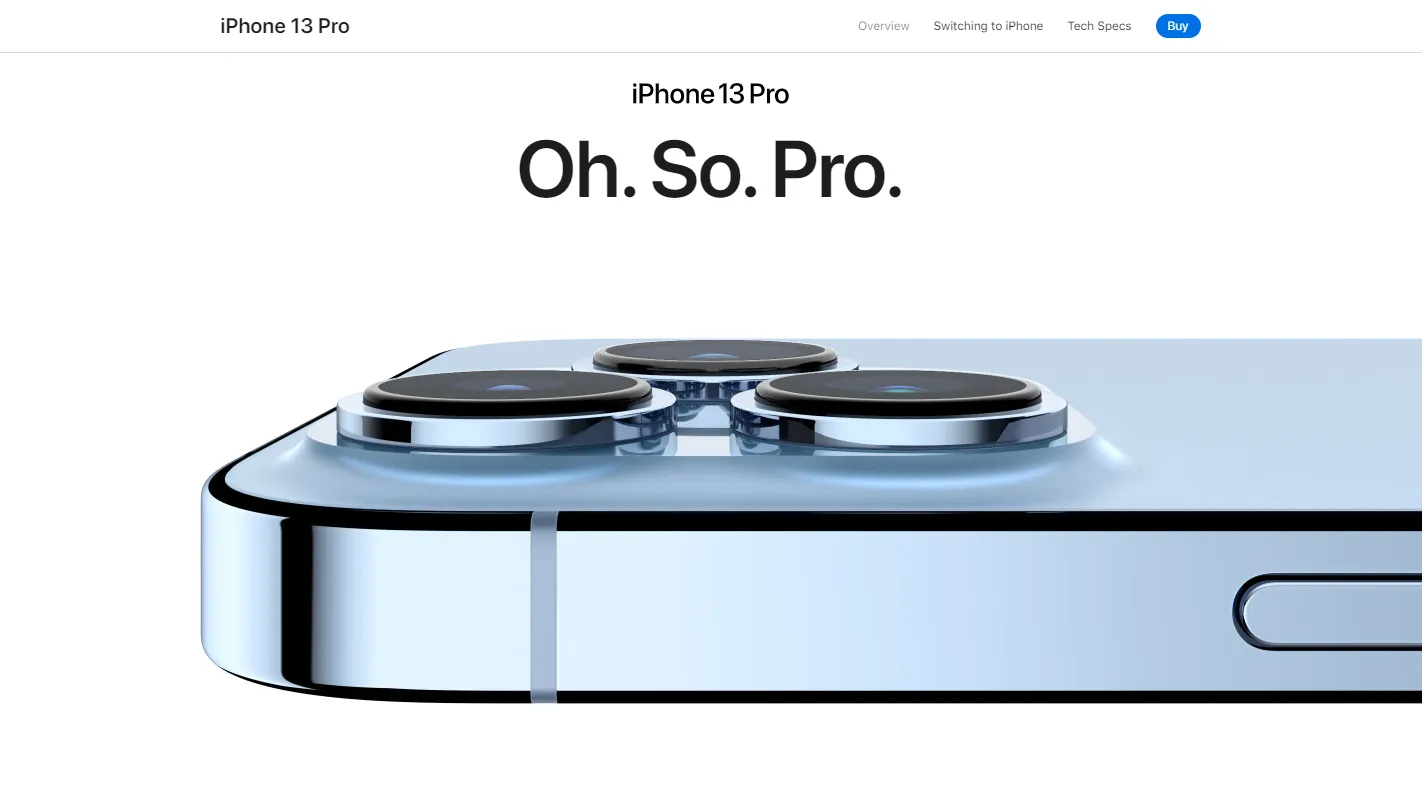
Image Source: Apple
#2: Product video
Product videos add both clarity and desirability to your product description pages. Video can be used to emphasize details, features, or functionalities that may be difficult to capture in copy and static imagery.
Product videos can also be used to communicate your brand’s personality to shoppers new to your site by providing them with key insights into your brand’s aesthetic.
#3: Shoppable quizzes
Consumers love taking quizzes, but shoppable quizzes also have the potential to shorten purchase decision-making processes by involving potential customers in a guided product selection process.
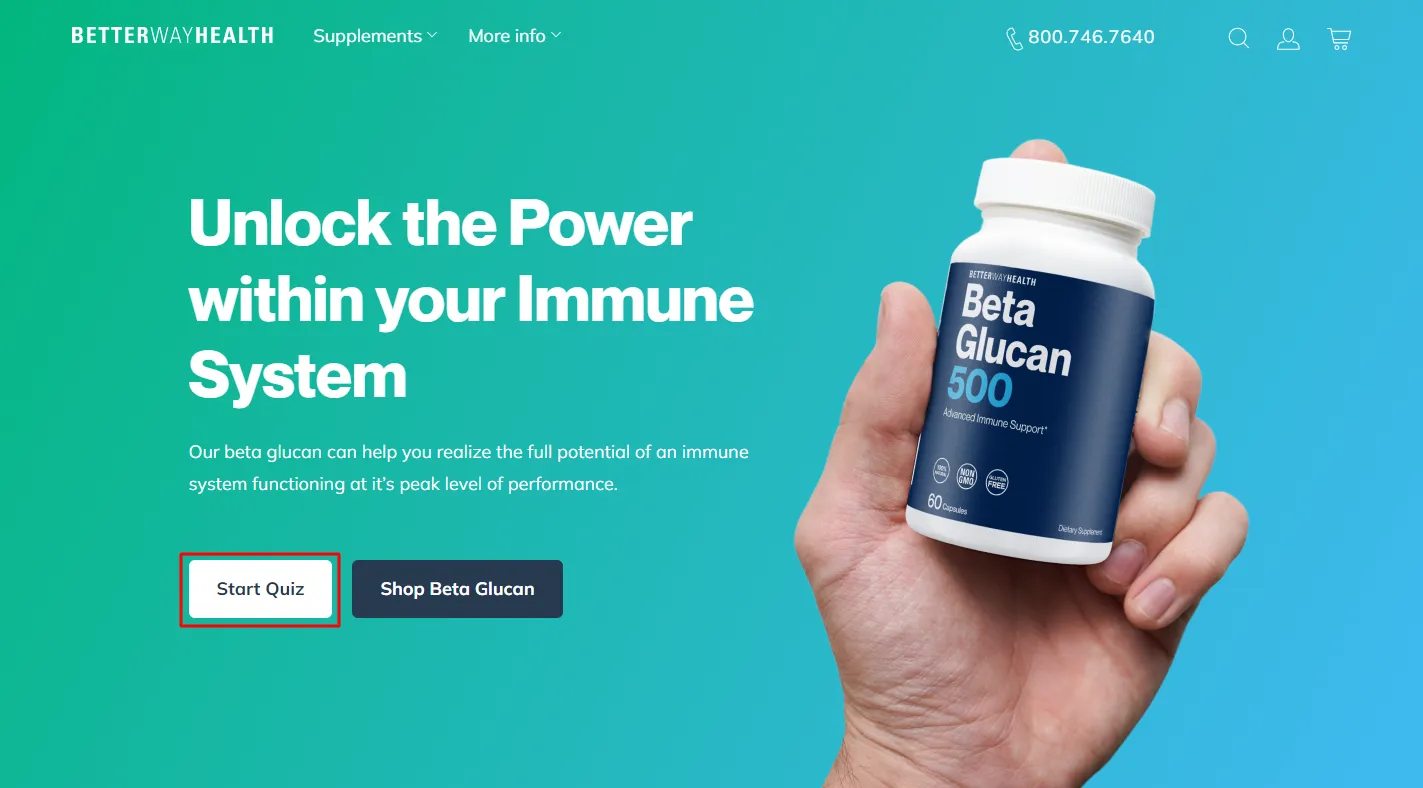
Image Source: Better Way Health
#4: User-generated content
Incorporating user-generated content (UGC) into your product pages (as Dagne Dover does in the screencapture image below) offers several benefits. First, it helps customers determine whether or not your items are right for them. Secondly, it adds a social motivation to purchase. As many as 90% of shoppers claim user-driven content has a greater influence on their buying decisions than all other forms of marketing combined.

Image Source: Dagne Dover
#5: A link to your return policy
Visible return policies increase shopper confidence. That’s why 64% of Fortune 50 retailers mention returns in their PDPs AND global navigation.
- Publishing returns policies, but not linking to them within the site’s navigation, is considered a ‘Below Standard’ practice
- Linking to returns policies from the site’s footer rates as ‘Standard’ practice
- Either linking to the returns policy from the top navigation bar (or from a top banner) or including the policy on both the site’s PDPs and global navigation constitutes an ‘Above Standard’ practice
#6: Expected shipping and delivery dates
No customer wants to place an order, only to find out that the item won’t ship for weeks or months. Empowering your shoppers with this information upfront improves their experience and reduces expenses related to WISMO inquiries. Solutions like Ship can embed key fulfillment details right into your product pages.
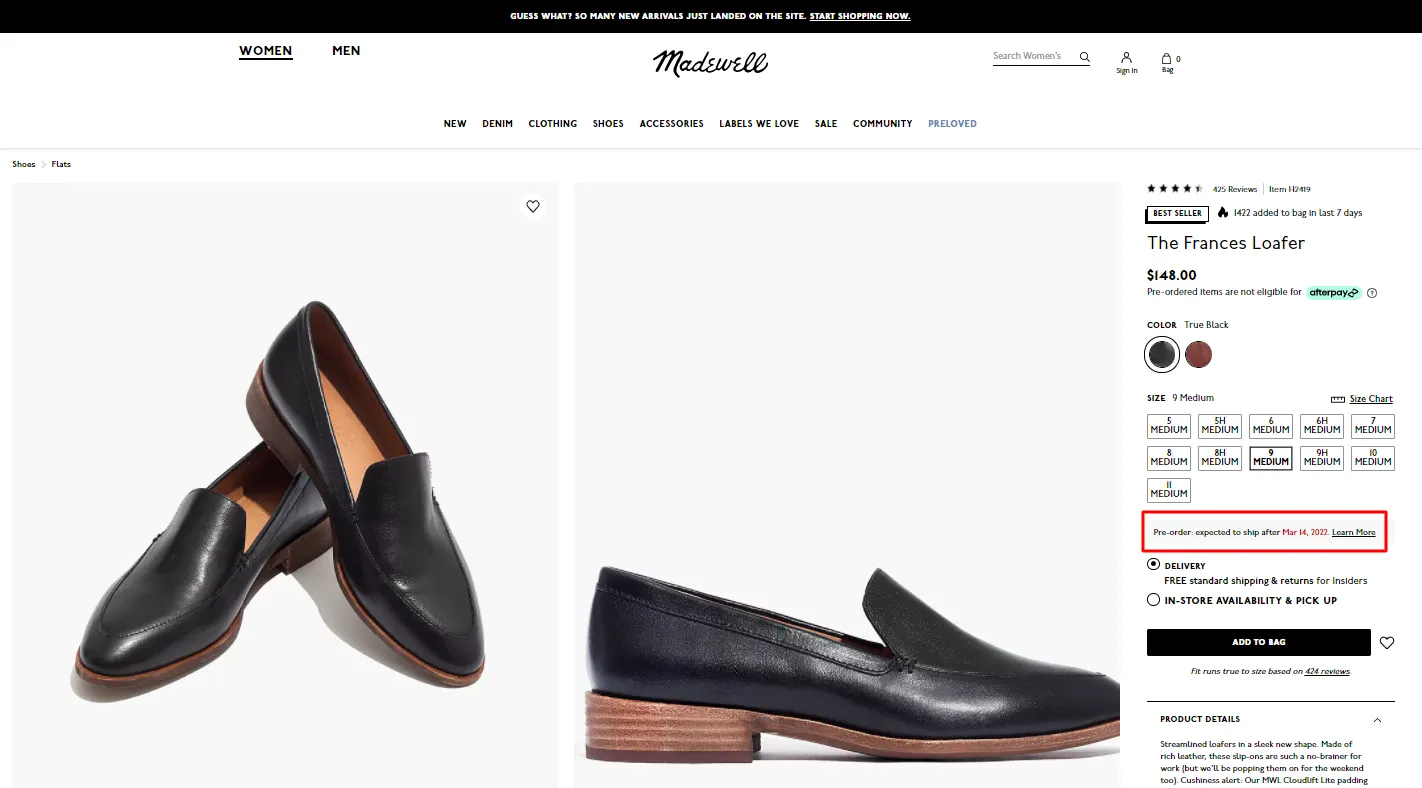
Image Source: Madewell
#7: Sufficient reputable product reviews
Including positive customer reviews on product pages boosts sales, but not all reviews are created equally.
First, you need enough reviews to give customers confidence that your products have been well-tested. Research from G2 and Heinz Marketing suggests that 61% of buyers would like to see between 11-50 reviews before deciding to make a purchase.
Consumers also need to believe that your reviews are trustworthy for them to influence purchase decision-making. Reviews from verified purchasers, reviews that aren’t extremely negative or extremely positive, and reviews that include photos or videos are perceived as more trustworthy by would-be buyers. If your site is lacking a good number of reviews–or if your reviews don’t read as credible to your audience–soliciting more from past purchasers may help.
#8: ‘Buy now, pay later’ (BNPL)
As the name suggests, ‘Buy now, pay later’ (BNPL)—also known as point-of-sale (POS) financing—allows customers to make a purchase today but pay for it over time.
This increasingly popular payment method is transforming the ecommerce industry—38% of consumers said access to BNPL increased their chances of making a purchase, and BNPL fintechs diverted about $10 billion dollars away from traditional banks in the last two years.
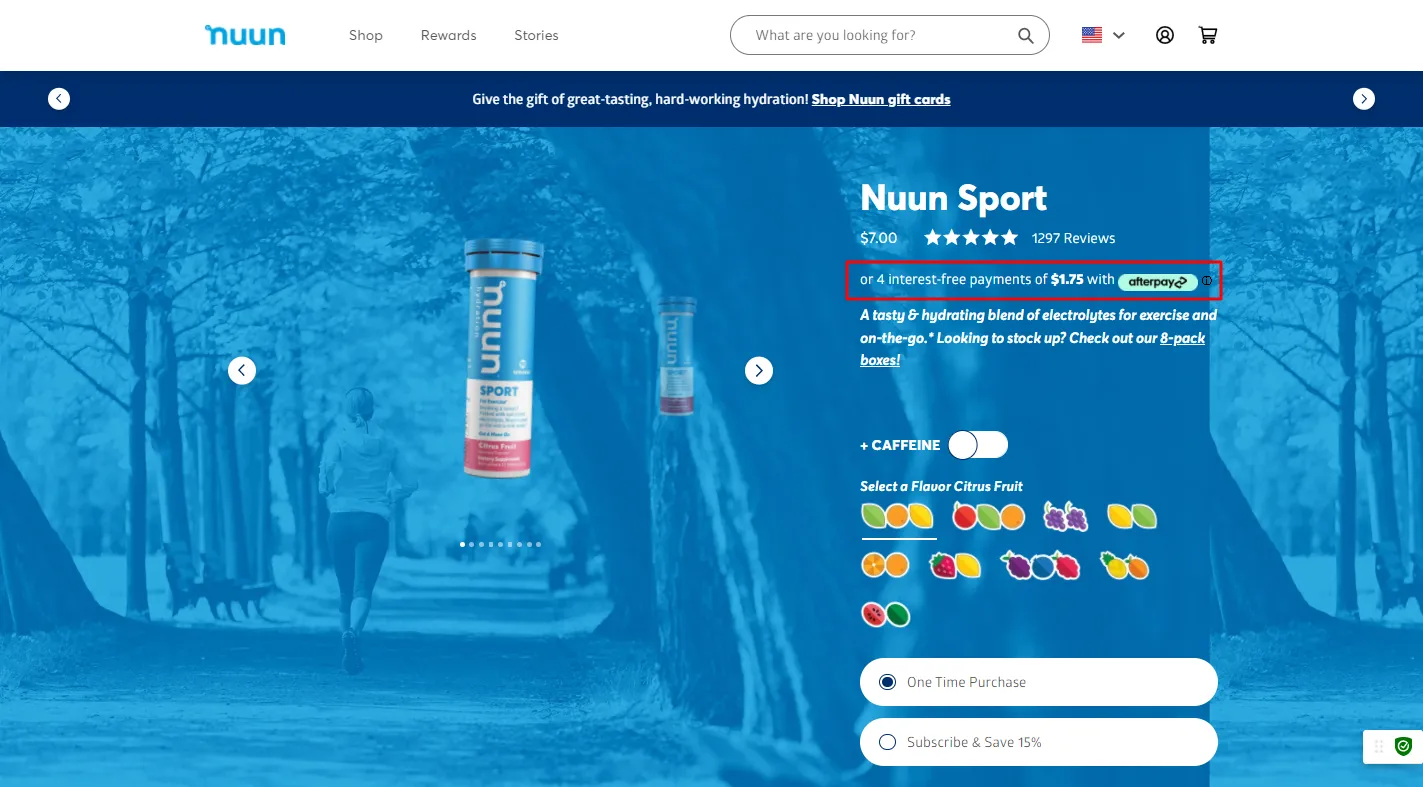
Image Source: Nuun
#9: Risk mitigators
To ecommerce shoppers, paying for an item they can’t feel or touch in-person is inherently risky. That’s why any perks you offer that mitigate the risk of buying from your business deserve prominent billing on your PDPs.
For example, do you offer a money-back guarantee? Do you allow returns, or do you offer especially favorable return terms? Do you provide free return shipping? If so, don’t just advertise these benefits as part of your customer experience. Explicitly communicate the way they reduce risk for your shoppers to help overcome any hesitation or concerns they may be experiencing.
#10: Related product recommendations
Make it easy for customers to get more out of their purchases (while also increasing average order value) by suggesting items to complement those they’re in the process of purchasing. Russell & Bromley, for example, matches its footwear with related belts and other accessories, facilitating effortless coordination for its customers.
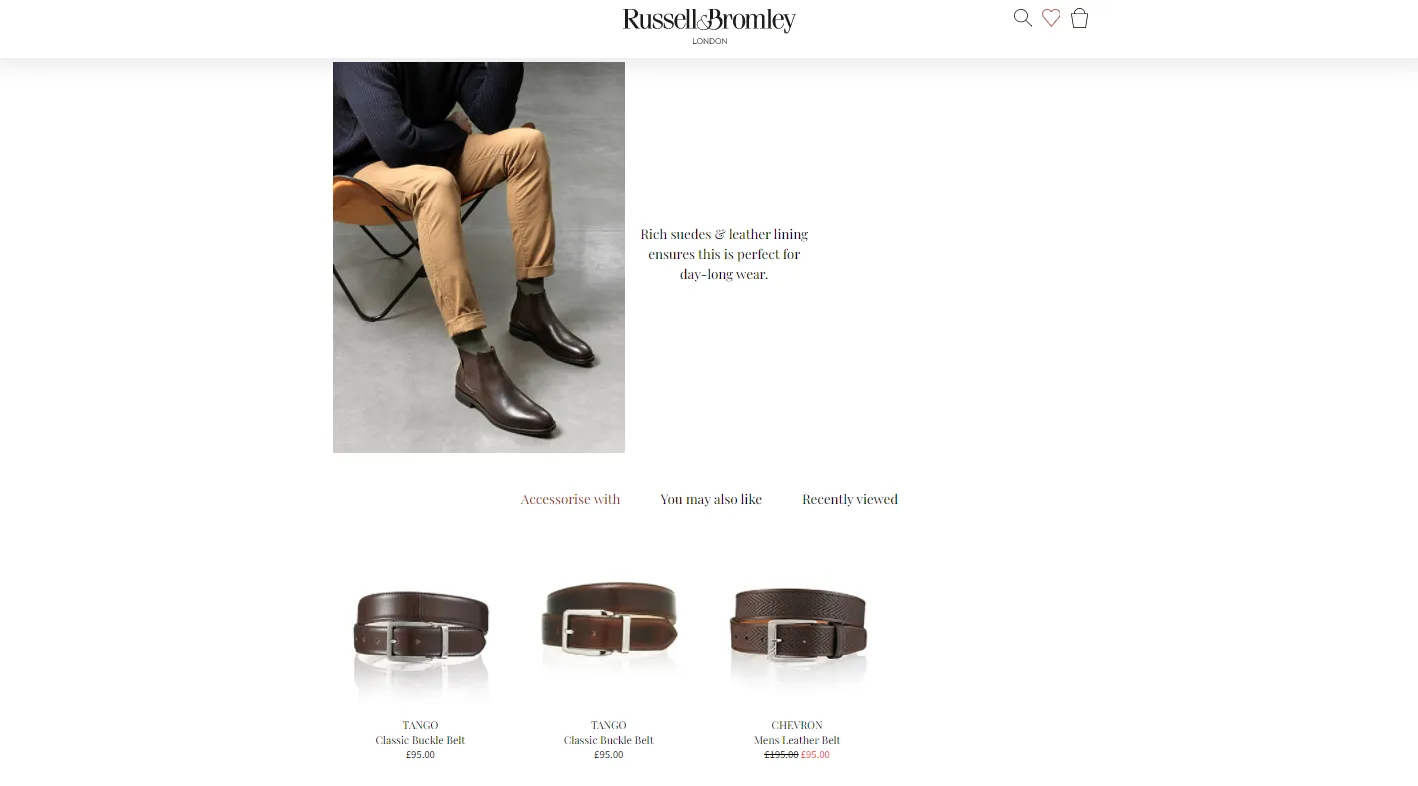
Image Source: Russell & Bromley
#11: Corporate social responsibility (CSR) tie-ins
If your company has any kind of CSR goals in place, integrate information about them into your product description pages to help shoppers understand how their purchases support your mission. On Running, for example, adds information on its sustainability efforts into an easily accessible drop-down on its PDPs.

Image Source: On Running
Overall, the goal with testing these and other qualities on your product description pages isn't just to add features because you can. Every element you build into your site should be tested to ensure it contributes in a meaningful way to both your customer experience and overall business results.
Pick and choose the qualities from this list that make sense for your brand, and then give them a try. Once you’ve determined whether or not they’re working, move on to the next feature in order to continually improve your ecommerce website.
























